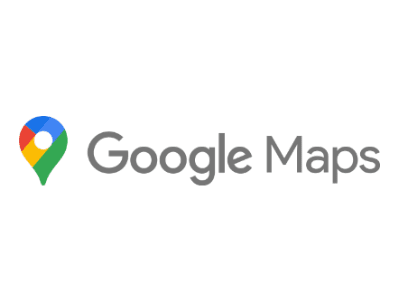Whether you’re new to SEO or looking for a better Provider, We Can Help You Be Found, Gain Clients and Increase Your Revenue
Why Choose Us?
Rather than give you a 'package' the same as dozens of other businesses, we custom design your campaign around your specific requirements.
The only reason an SEO agency would lock you into a contract is because they have no plan for your success. Opt out at any time if you're not happy.
You've heard of EEAT, BERT and Helpful Content? SEO Australia works hard to be on top of everything Google so you can serve all your new customers.
Our team is always available and your campaign is as critical to us as it is to you. Our monthly summaries and client team keep you in the loop.
Unlike many SEO agencies, our team are 100% Australian, based in Melbourne, and provide high quality content and imagery for Aussie businesses.
As part of your campaign you receive your own dedicated reporting portal accessible online 24/7, displaying all your traffic, conversions and results.
No matter what type of business you are, our SEO Agency Australia works around the clock to ensure that your business is top-of search, visible and generating new customers daily. Leave the tech, content and strategy to us.
We work with these platforms…















No matter your business size or industry, we tailor our services to suit your requirements. Browse our services or Contact Us with any questions
The No #1 Step before you do anything else! Our Pro SEO Audit will find out errors and issues for instant rewards.
For local businesses who want to dominate their local area, Local SEO gives you great bang for your buck.
Vital for growing businesses who want the most qualified traffic and enquiries from across their City and State.
Pay Per Click is the best way to get instant traffic to your offer. Find out the right way to get high ROI.
Have you been burned by bad SEO, and received No Results despite months of promises? We can help!
For a limited time we are offering free no obligation 20 minute consultations where we understand your business and sales goals. Simply click the button below to start the process.
After reviewing your current site and then researching your market and ideal customers, we propose a customised solution that will bring you the most quality traffic and the desired results for your campaign.
We get to work on your behalf, and begin building your SEO solution. Access your online dedicated report to check out your results 24/7.
If you have been burned by an SEO Agency Australia, or provided with useless reports that leave you none-the-wiser, or have simply received no results, our SEO Rescue program is for you. Unfortunately the SEO field is unregulated and contains bad actors that exploit business owners and their understandable lack of clarity around the technical and practical matters of SEO.
Let us help you get back on track by reversing the damage and getting you solid results that bring you much better return on investment.


Many business owners report to us that they were confused by all the packages offered by most SEO companies. After all, how is it possible to charge the same fixed fee per month for ‘Company A’ that has 5 offices around Australia and employs 200 people, and ‘Company B’ that runs a small home based solo consultancy? Yep it makes no sense to us either.
With a modest investment in our SEO Agency Australia, you are assured of a monthly budget that fits within your marketing strategy and brings you high value leads on tap.
That’s OK. For busy business owners, trying to understand the intricacies of SEO and what you need right now can be difficult. That’s why we offer our free 20 minute consultation, so you can ask any question you like and we can get to know a little about your business and growth goals.
Don’t worry, there’s no obligation and there’s no way you will look silly by not knowing exactly where to start. If we can help you expand your business we will let you know, and what it will take to get there. Contact us now.

If you have a specific question that isn’t listed here, please call 03 9021 8987 to speak with an SEO expert at our SEO Agency Australia
This is a common question regarding SEO, and the simple answer is - it is not a cost, it is an investment. As with advertising on TV, your investment varies depending upon how much reach you want, how big your market is and what your marketing budget is. Unlike most SEO agencies, we don't do fixed price 'packages' as every business is different. We custom design your digital marketing campaign from scratch based on your ideal market and what kind of return you want from SEO. Contact SEO Australia to get a better idea of your investment ROI.
Yes we can! We employ manual tried and true SEO methods and our clients enjoy great results. We research your industry and use the best keywords to increase traffic to your website - traffic from people who are 'ready to buy'. Isn't this the reason you launched your website in the first place?
The short answer is - No we don't. Unfortunately there are many SEO companies out there who persist in this outdated and frankly mis-leading assertion, that they can 'Guarantee' number #1 rankings. No one can 'guarantee' a number #1 ranking. Google Search Central - Google's offical SEO Channel - says the following: "No one can guarantee a #1 ranking on Google." A professional and effective SEO Company - like SEO Australia - uses the latest technology and competitive analysis to find out how to bring you the most targeted traffic to meet your sales and marketing goals. If you are comparing which SEO Company to go with, and one of them has offered a 'Guarantee', please contact us and we can show you why this 'guarantee' is meaningless.
The simple answer to this is... yesterday! Rather than wait until your website is finished, or you start blogging, you should hire a search marketing specialist as early as possible so that you can build your online marketing strategy. This strategy determines exactly what kind of SEO campaign you need, and what technical and content SEO needs to be performed for your business. Without an online marketing strategy, your search efforts are doomed to fail.
This is an unanswerable question - the only measure you should be using foe finding the best SEO agency is will they increase traffic to your offer or service. Talk to us today for more information about what you should be looking for with your SEO Strategy.
Yes we do! Unfortunately many businesses have invested in outdated and technical 'SEO services' that have not returned any benefits, and in some cases made your visibility and traffic worse! That is why we developed a new service called 'SEO Rescue'™. We can fix faulty seo programs by auditing your current site, looking at your target market and generating new website design and content that gets you back into Google's good books. For more information on this important service, see our SEO Rescue™ page.
We work for you! Our team works for you as if we were in your office as part of your team. We are 100% committed to your SEO success.
Telephone:
03 9021 8987
Address:
34 Queen Street
Level 3
Melbourne VIC 3000
SEO Australia propels your business forward with leading edge digital marketing and smart content.